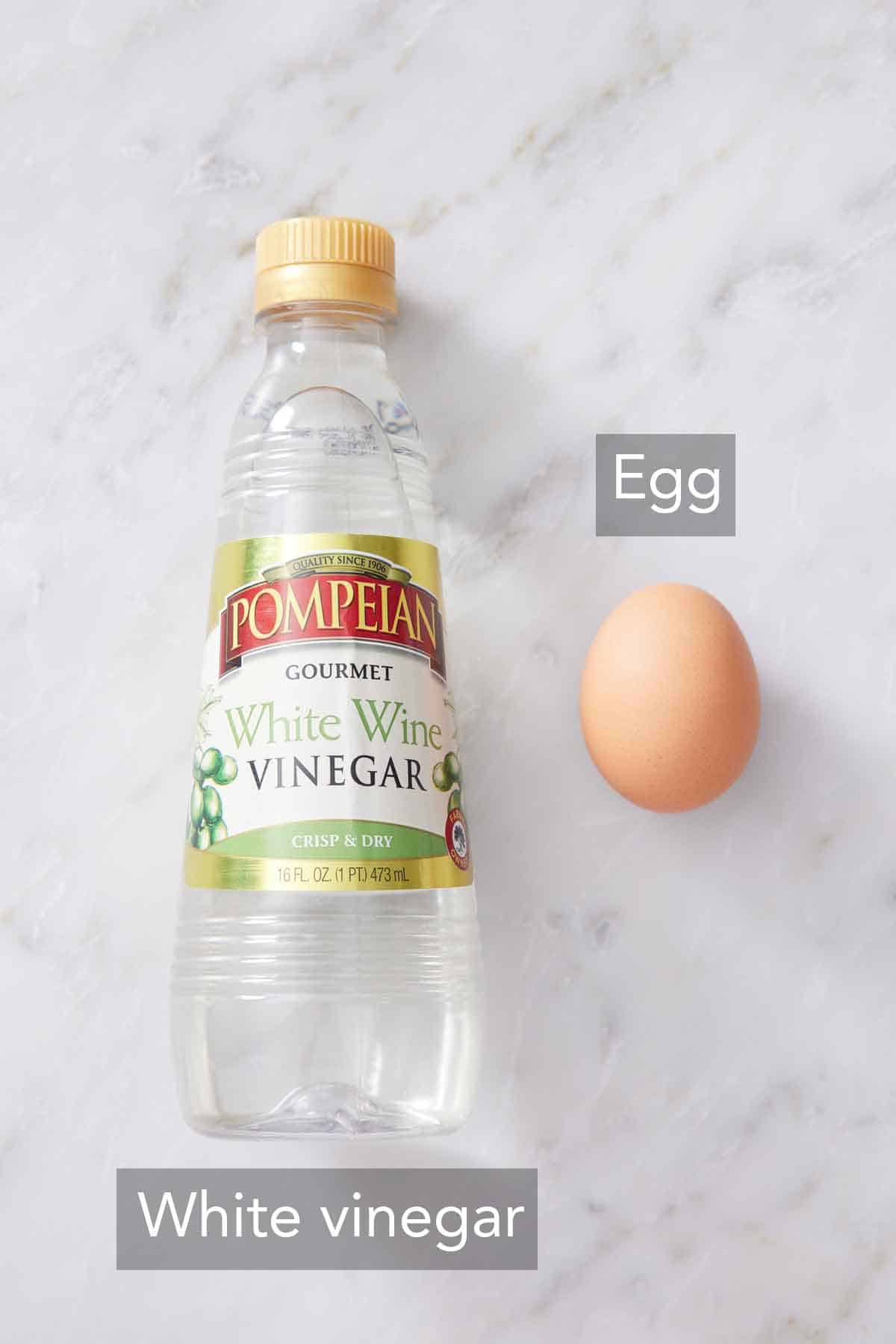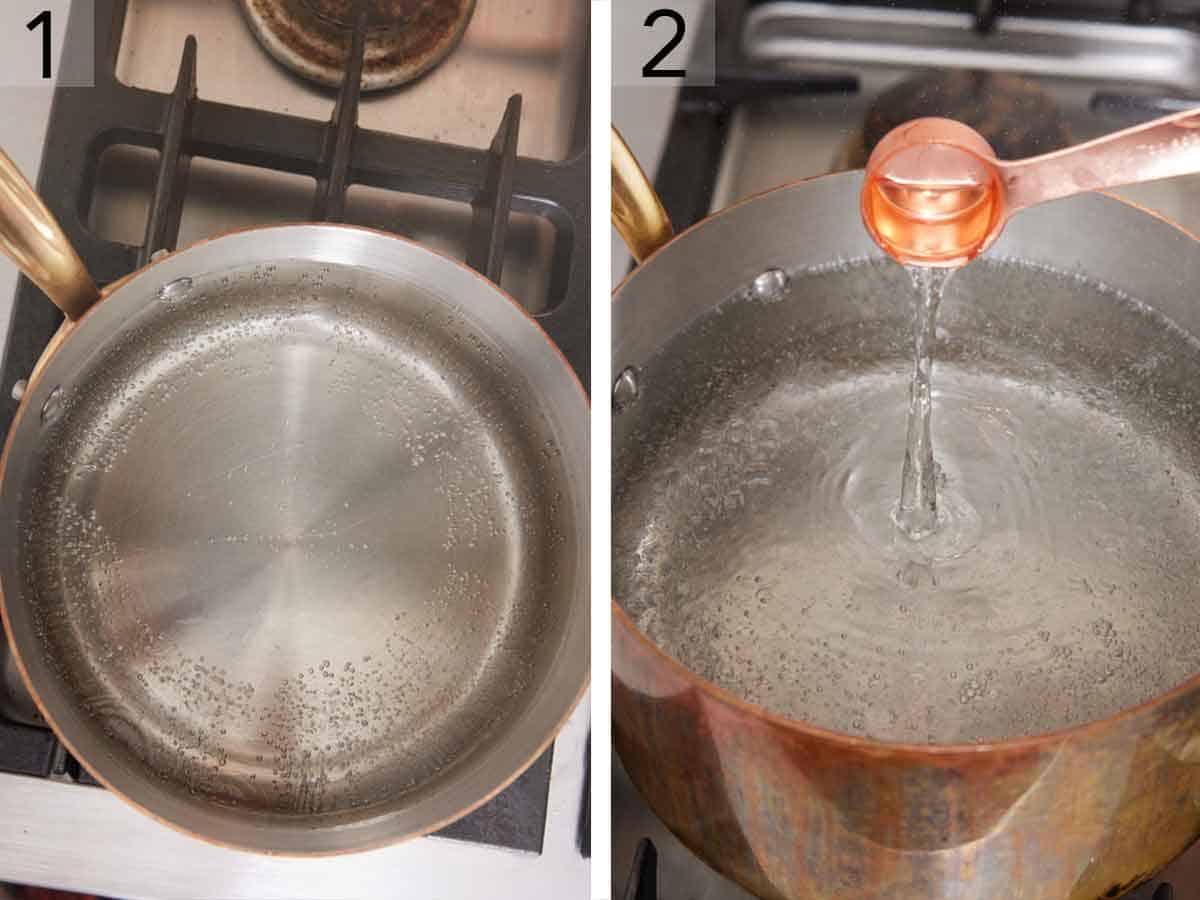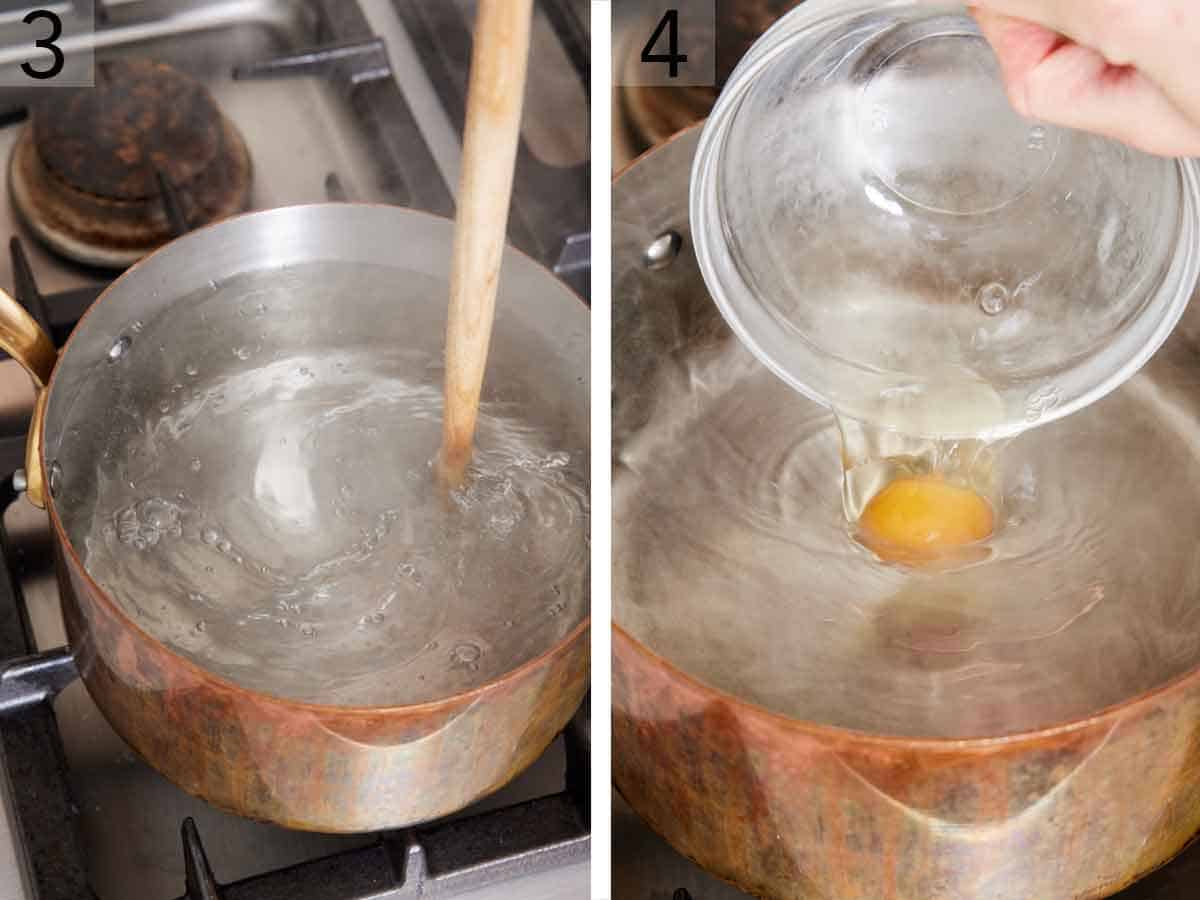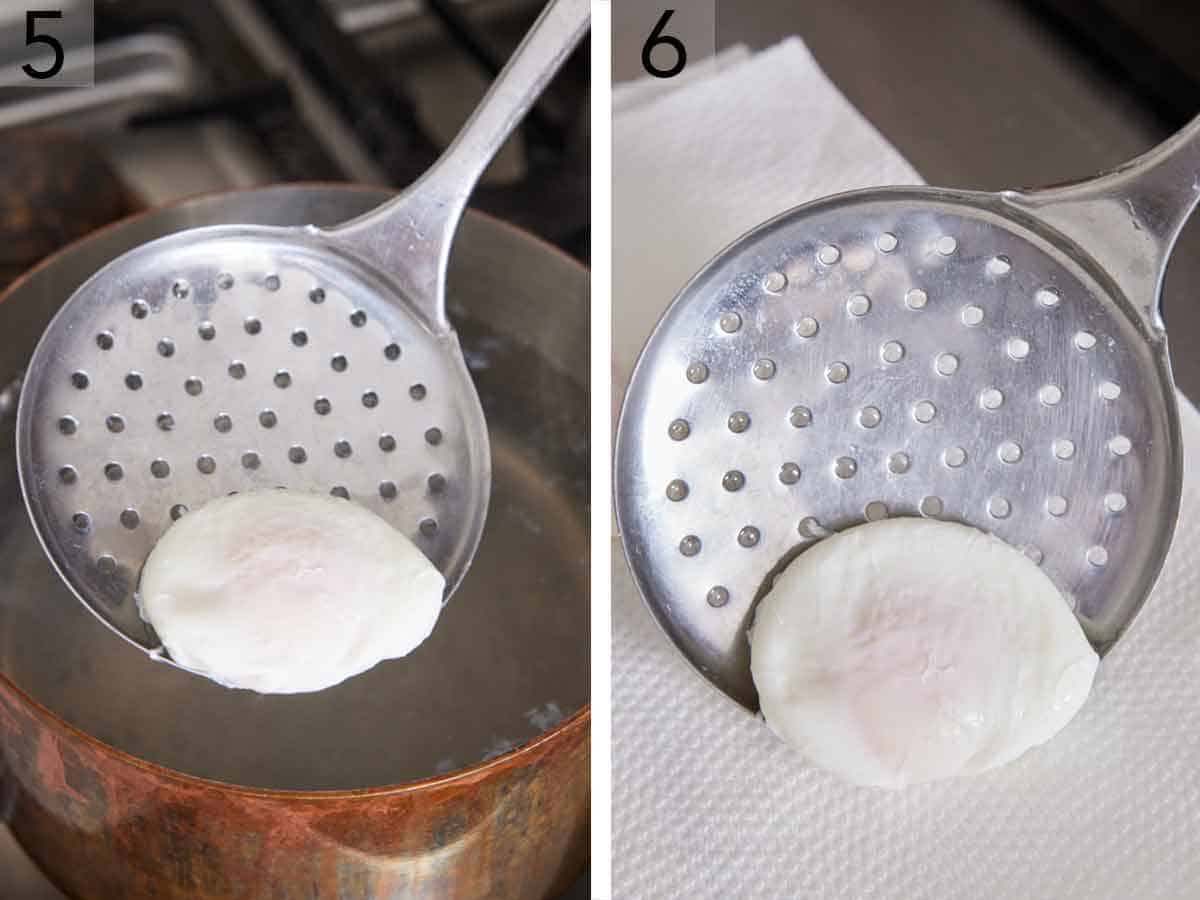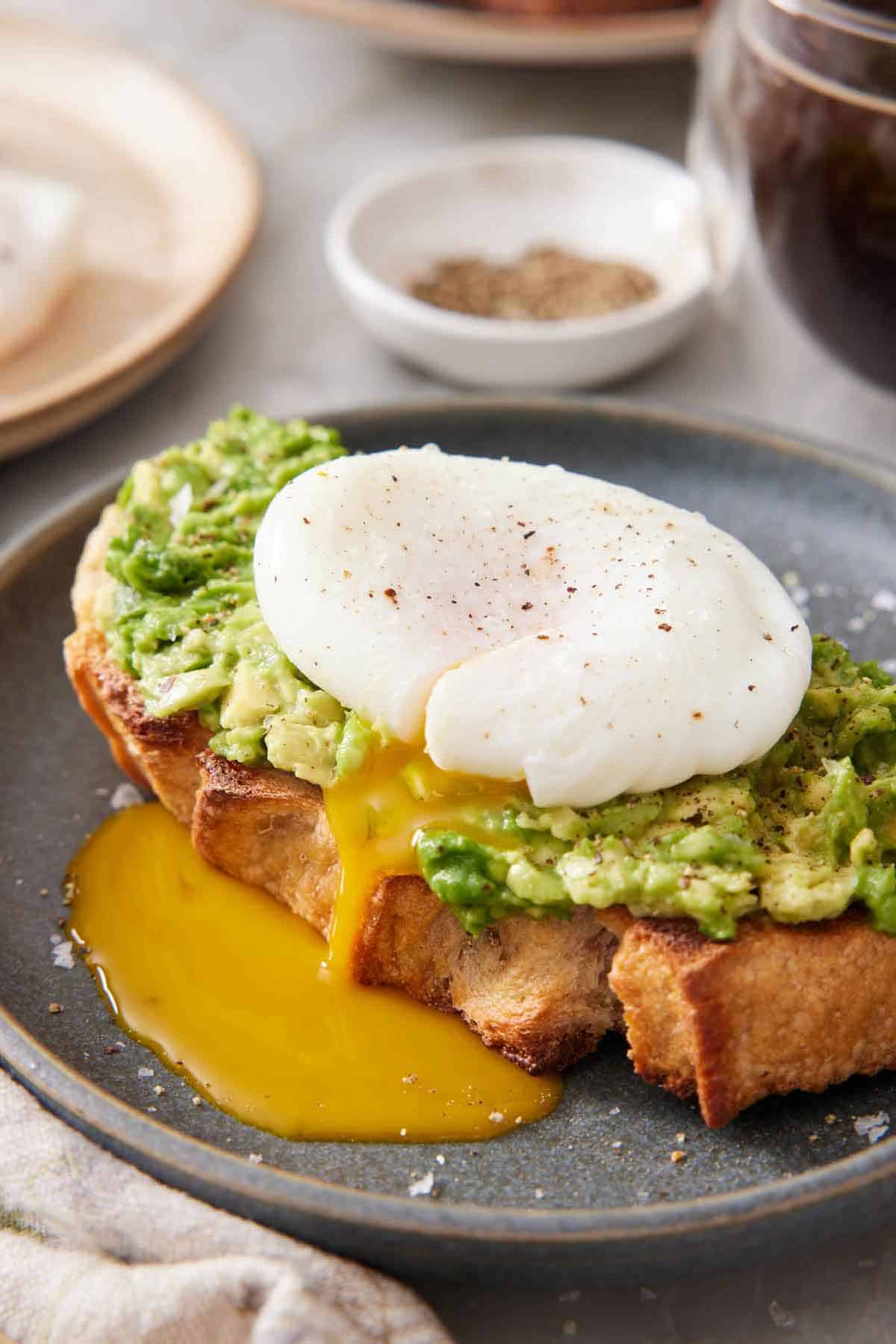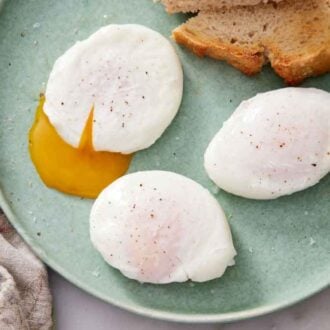My simple how-to has all the details, from choosing the best eggs to use to explaining why white vinegar is so important to showing you how to prevent egg whites from spreading out in the water. If you follow my beyond-easy steps, you’ll learn how to poach an egg like a pro in no time! Think of the endless homemade brunch opportunities! For more easy egg recipes, try my breakfast casserole recipe, homemade frittata, or quiche Lorraine recipe.
What You Need to Make this Recipe
Egg — the fresher the eggs, the better when it comes to poaching eggs! Older eggs have looser, runny whites we can cook up as a stringy mess in the hot water. Look for an expiration or best-by date that is the farthest out from when you plan to use them. Vinegar — this acid helps the eggs hold their shape in the water. I like using white vinegar, but you can also use apple cider vinegar, white wine vinegar, or even a splash of lemon juice in a pinch! Just be aware that lemon juice will give the eggs a slightly lemony flavor.
How to Poach an Egg
- Grab a large, wide saucepan and fill it with 2 inches of water. Place the pot of water over medium-high heat and bring to a boil. Once the water is boiling, reduce the heat so it is just simmering. You do not want a rolling boil! This will ruin your poached eggs.
- When the water is ready, crack a cold egg into a small bowl or ramekin. Ensure that the yolk is intact and that there are no eggshell shards in the bowl. Stir white vinegar into the hot water.
- Use a spoon to stir the hot water in a circular motion. This creates a vortex or swirling tornado-like effect in the center of the pot.
- Gently drop the egg into the center of the vortex, and cook for about 3 minutes. Resist the temptation to poke or prod the egg during this time. After 3 minutes, the egg whites should be opaque and firm, and the egg yolk should give when gently pressed with the back of a spoon. If you prefer a harder yolk, cook for 30 seconds to 1 minute longer.
- Carefully remove the poached egg using a slotted spoon and allow excess water to drip back into the saucepan.
- Place the poached egg on a plate lined with paper towels to absorb any excess water. Repeat the process to poach additional eggs. You may need to add water to keep it at a depth of 2 inches. Serve hot.
Pro Tips for Making this Recipe
Use the freshest eggs you can: Fresh eggs have less of the thin whites, so you will have fewer strands that develop while the egg cooks. Older eggs will have more watery whites, so if you decide to use them, I recommend straining the egg first (see how just below!) Use cold eggs! They will hold together better when cracking and placing in the water. Strain your eggs: If you want to remove some of the thinner, more liquidy parts of the egg whites (or albumen), crack an egg into a fine mesh strainer and let the egg drain into a bowl for a minute or so. Then, transfer the strained whole egg to a small bowl and continue poaching as directed. The very watery part of the egg whites causes wisps or strands to develop while the eggs cook. They don’t affect the taste of the poached eggs, but the eggs look a lot nicer without them. Crack the egg into a small cup, bowl, or ramekin: This makes it easy to tell whether or not the yolk is intact. It also makes it more convenient to remove any pieces of eggshell that may fall in. Lastly, cracking the egg into a bowl makes it much simpler to add the egg to the pot of hot water and avoid being splashed by hot water. Watch the temperature of the water: It needs to be just simmering. You should see bubbles on the bottom of the pot, but there should be no bubbles breaking at the top. If the water is too hot, your poached egg will split. Adjust your stove as necessary to maintain barely simmering water. How to poach multiple eggs: The steps show how to poach one egg, but you can certainly cook more than one egg at a time! With a more crowded pan, you won’t be able to swirl the water, so the eggs won’t have that neat, quintessential look, but they will still taste delicious. Make sure you choose a pan or pot large enough to hold your eggs while also leaving a couple of inches of space between each one. (A deep, 12-inch skillet works well.) Skip the swirling of the water and place your eggs in the hot water one at a time when the water is barely simmering. Don’t skip the vinegar: It helps hold the egg whites together the best poached eggs. Don’t worry, the eggs will not taste like vinegar!
If you’ve tried this “how to poach an egg” recipe, then don’t forget to rate it and let me know how you got on in the comments below. I love hearing from you!





